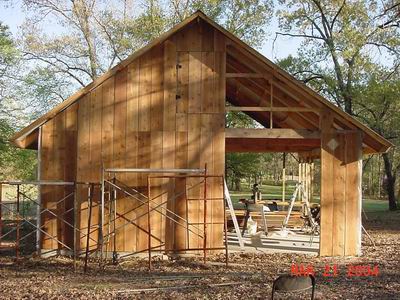Characteristics of Utile Wood
Expert info on that exotic African wood known as Utile. October 23, 2007
Question
Thanks for your input on my last post regarding staved columns. I quoted in Spanish cedar, but now the architect is going for utile. Never heard of it. Neither has my supplier. Anyone have any experience with it or know anything about it?
Forum Responses
(Architectural Woodworking Forum)
From contributor J:
Utile is a relative of Sapele and is sometimes sold as "Sipo" or just African mahogany. We have not (knowingly) used it but have looked at it as a Honduras mahogany replacement. Some of our local suppliers do carry it.
From the original questioner:
My local supplier just found some but they are asking over 5.00 BDft for 8/4. Does this seem right? I need about 2000 ft.
From contributor G:
They change the species and you get to change your quote. There is not just a materials difference. The utile (sapele, African mahogany) type woods are heavier and tougher on your equipment.
From contributor L:
African mahogany... I've nicknamed it wildwood. It just goes crazy while you cut it. I haven't gotten a load that was stable while cutting it. I won't get it again.
From the original questioner:
My experience with African mahogany is that I will get some tear out when planing in the ribbon, but it turns really nicely on my lathe.
From contributor F:
African mahogany is Khaya ivorensis. Utile is Entandrophragma utile. In my experience the only similarity is the country of origin. I wouldn't use khaya for exterior unless it was specified, but I use utile (we started calling it "utility" because we use it so much) for most of my exterior doors.
I disagree with the poster that says it moves when you cut it. My supplier dries 95% of his stock himself and I have found his utile to be very nice to work with. Looks good too.
80-90% of the time I could use utile instead of SA mahogany and no one would know the difference.
From the original questioner:
My supplier says he can get it for 5.00 per bd ft. Does this sound about right?
From contributor F:
Sounds close. I think I can get it for 3.85 a BF for 250 BF (September '06) up here in MA. And it is good stuff, just made a very nice hand rail and parts today.
From Professor Gene Wengert, Sawing and Drying Forum technical advisor:
I would not consider this wood to be related to sapele at all. It is totally different. It weighs less than oak lumber by about 25%. It is not as strong as oak. It is exceptionally stable, requiring about 7% MC change radially and 5% MC change tangentially to result in 1% size change. Oak requires 3% MC change tangentially for a 1% size change. The only possible difficulty with utile is that it does chip out at times, especially with dull tools or with large rake angles on knives. I am curious why such a species would be specified instead of many other comparable ones. What characteristics are desired?
From Professor Gene Wengert, Sawing and Drying Forum technical advisor:
For anyone that is interested in trivia: Spanish cedar is not a cedar or a softwood, but it is a hardwood (leaf tree). It has gum that often bleeds out for years. The gum cannot be set in kiln drying. (Softwood pitch can be set in kiln drying to eliminate all bleeding.)
From the original questioner:
I have first hand experience with the pitch in Spanish cedar and with the smell. One rip and I can taste it. I usually tell my customers to prime it with a stain killer. Hopefully that will take care of the pitch and bleeding.
I am not sure why they would specify utile. I'm told that these exterior columns will be used at a country club in SC. I originally recommended Spanish cedar.
